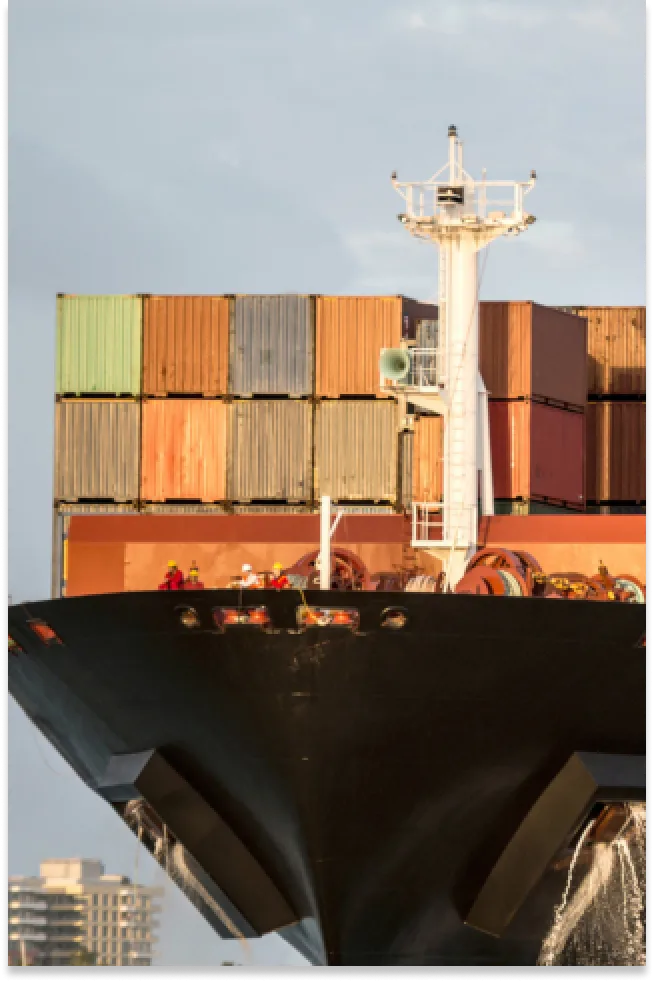The Evolution of CEMS in Maritime Operations
CEMS have long been used to measure emissions from vessels, providing real-time data on pollutants such as CO2, NOx, CH4 and SOx. These systems are crucial for ensuring compliance with environmental regulations like those set by the International Maritime Organization (IMO). However, traditional CEMS often lack the advanced analytics and integration capabilities needed to maximize operational efficiency and emissions reduction. SailPlan’s direct emissions monitoring is different.
SailPlan: Beyond Traditional CEMS
SailPlan offers a next-generation solution that not only enhances existing CEMS but also functions effectively as a standalone system. Here’s how SailPlan sets itself apart:
- Advanced Data Integration and Analytics: SailPlan integrates seamlessly with legacy systems to provide enhanced data analytics and real-time insights. This capability allows operators to monitor fuel consumption and emissions more effectively, identifying trends and inefficiencies that can be addressed to optimize vessel performance.
- Comprehensive Monitoring and Reporting: SailPlan offers a full suite of monitoring tools that go beyond traditional CEMS. It provides detailed emissions data and generates compliance reports that meet international standards such as EU MRV and FuelEU Maritime. This feature simplifies the regulatory reporting process and ensures accurate, timely reporting.
- Standalone CEMS Capabilities: SailPlan can be deployed as a complete CEMS solution, offering all the benefits of traditional systems with added features like machine learning and AI-driven analytics. This standalone capability means operators can rely on SailPlan to manage emissions without needing additional systems.
Enhancing Sustainability and Operational Excellence
SailPlan’s integration capabilities not only enhance emissions monitoring but also contribute to broader sustainability goals. By providing operators with detailed emissions data, SailPlan enables the implementation of more sustainable practices, such as the adoption of cleaner fuels and the optimization of engine performance to reduce emissions.
Business Advantages of Using SailPlan
Integrating SailPlan into maritime operations offers significant business benefits:
- Cost Efficiency: By optimizing fuel consumption and reducing emissions, SailPlan helps operators achieve substantial cost savings. Its insights lead to reduced fuel expenses, which can constitute a major portion of operational costs. Precision = savings.
- Operational Excellence: SailPlan enhances operational efficiency by providing a comprehensive view of vessel performance. This holistic approach enables better decision-making, reduces downtime, and improves asset utilization, ultimately leading to increased profitability.
- Risk Mitigation: With its advanced monitoring capabilities, SailPlan helps operators mitigate risks related to regulatory compliance and environmental impact. This transparency supports effective risk management and strategic planning.
Future-Proofing Maritime Operations
As the maritime industry faces increasing regulatory pressures and environmental challenges, SailPlan offers a solution that not only meets current needs but also adapts to future demands. Its scalable architecture and advanced analytics make it a flexible and robust tool for maritime operators aiming to stay ahead of industry trends and requirements.
Conclusion
SailPlan represents the future of emissions management in the maritime industry, offering an advanced solution that enhances traditional CEMS while providing standalone capabilities. By integrating real-time data, sophisticated analytics, and comprehensive reporting, SailPlan empowers operators to optimize vessel performance, reduce emissions, and achieve sustainability goals. As the industry continues to evolve, embracing advanced solutions like SailPlan will be key to navigating the challenges of emissions management and building a more sustainable future.
For more information on how SailPlan can enhance your CEMS and improve your maritime operations, reach out to our team today.



